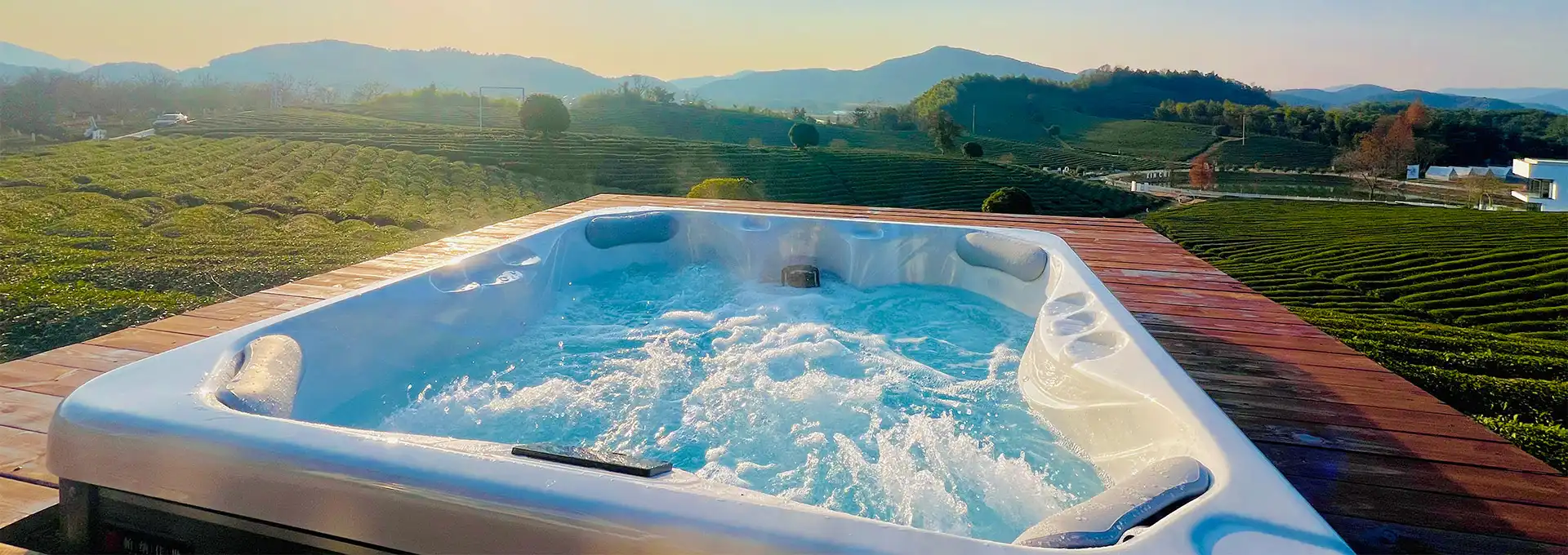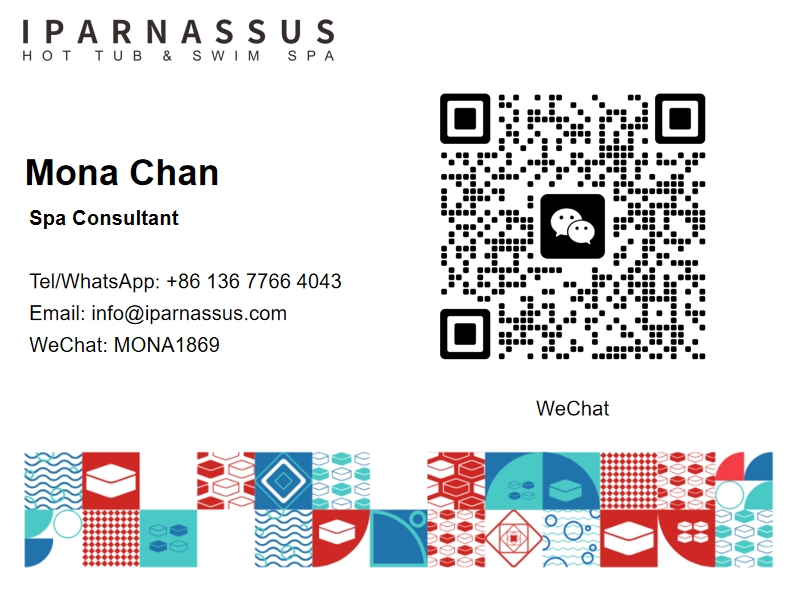Can I use pool shock in a hot tub?
2025-06-24 22:57:06
Many hot tub owners often wonder if they can use pool shock to sanitize their 4 person hot tub. While both pools and hot tubs require proper maintenance and sanitation, it's important to understand the differences between these two water environments. This blog post will explore the use of pool shock in hot tubs, discussing its effectiveness, potential risks, and alternative solutions for maintaining a clean and safe hot tub experience.
What are the differences between pool and hot tub chemistry?
Water temperature and volume
One of the primary differences between pools and hot tubs is the water temperature and volume. A 4 person hot tub typically holds a much smaller volume of water compared to a swimming pool, and the water temperature is significantly higher. This higher temperature can affect the chemical balance and sanitizer effectiveness differently than in a pool. The warmer water in a hot tub can cause chemicals to dissipate more quickly, requiring more frequent maintenance and potentially different treatment methods compared to pools. Additionally, the smaller water volume in a 4 person hot tub means that chemical concentrations can change more rapidly, making it crucial to monitor and adjust levels more frequently than in a larger body of water.
Usage patterns and bather load
Another key difference between pools and hot tubs is the usage pattern and bather load. A 4 person hot tub is typically used more frequently and intensively than a swimming pool, with users often spending extended periods soaking in the warm water. This higher bather load relative to the water volume can lead to a more rapid accumulation of contaminants, such as body oils, sweat, and bacteria. As a result, hot tubs require more frequent and thorough sanitation to maintain water quality and prevent the growth of harmful microorganisms. The concentrated use of a 4 person hot tub also means that the water chemistry can change more quickly, necessitating more regular testing and adjustment of sanitizer levels compared to a pool.
Chemical stability and effectiveness
The chemical stability and effectiveness of sanitizers can vary between pools and hot tubs due to the differences in water temperature and usage patterns. In a 4 person hot tub, the higher water temperature can cause some chemicals to break down more quickly, potentially reducing their effectiveness. This is particularly true for chlorine-based sanitizers, which can dissipate more rapidly in warm water. Additionally, the presence of organic matter from higher bather loads can further deplete sanitizer levels, making it necessary to use different chemical formulations or treatment methods specifically designed for hot tub environments. Understanding these differences is crucial for maintaining proper water chemistry and ensuring a safe and enjoyable experience for users of a 4 person hot tub.
Is it safe to use pool shock in a hot tub?
Potential risks and side effects
Using pool shock in a 4 person hot tub can pose several potential risks and side effects. Firstly, pool shock is typically more concentrated than hot tub sanitizers, which can lead to over-chlorination if not properly diluted. This can cause skin and eye irritation, as well as damage to the hot tub's components, such as the pump and filtration system. Additionally, the high concentration of chemicals in pool shock can upset the delicate balance of your hot tub's water chemistry, potentially leading to pH imbalances, scale formation, or cloudy water. Moreover, the intense oxidizing properties of pool shock may accelerate the breakdown of organic materials in the water, including lotions and oils from bathers, which can create a foamy surface and unpleasant odors in your 4 person hot tub.
Impact on hot tub components
Using pool shock in a 4 person hot tub can have detrimental effects on various components of the hot tub system. The high concentration of chemicals in pool shock can potentially damage the acrylic surface of the hot tub, causing discoloration or etching over time. Furthermore, the harsh chemicals may corrode metal parts, such as jets, heaters, and pumps, leading to premature wear and tear. The filter system is particularly vulnerable to damage from pool shock, as the concentrated chemicals can break down the filter media more quickly, reducing its effectiveness and lifespan. In some cases, using pool shock in a hot tub may even void the manufacturer's warranty on your 4 person hot tub, as it is not a recommended maintenance practice for these specialized water environments.
Effectiveness in hot tub sanitation
While pool shock can be effective in killing bacteria and other contaminants, its effectiveness in a 4 person hot tub may be compromised due to the unique conditions of the hot tub environment. The higher water temperature in a hot tub can cause the active ingredients in pool shock to dissipate more quickly, potentially reducing its overall sanitizing power. Additionally, the smaller water volume of a 4 person hot tub means that the chemical concentrations can fluctuate more rapidly, making it challenging to maintain consistent sanitizer levels. Hot tubs also tend to have a higher concentration of organic matter due to increased bather load, which can quickly deplete the sanitizing agents in pool shock. As a result, using pool shock in a hot tub may not provide the same level of sustained sanitation as it would in a pool, potentially leaving your 4 person hot tub vulnerable to bacterial growth and other water quality issues.
What are the alternatives to using pool shock in a hot tub?
Specialized hot tub sanitizers
Instead of using pool shock, there are specialized hot tub sanitizers designed specifically for the unique conditions of a 4 person hot tub. These products are formulated to work effectively in high-temperature water and smaller water volumes. Bromine-based sanitizers are a popular choice for hot tubs, as they are more stable in warm water compared to chlorine. Bromine tablets or granules can be added to a floating dispenser or directly to the water, providing continuous sanitation. Another option is mineral-based sanitizers, which use silver and copper ions to kill bacteria and algae. These can be used in conjunction with low levels of chlorine or bromine for optimal results in a 4 person hot tub. Some hot tub owners also opt for salt systems, which generate chlorine through electrolysis, providing a gentler and more consistent sanitizing effect.
Non-chlorine shock treatments
For those seeking alternatives to traditional chlorine-based shock treatments, non-chlorine shock options are available for use in a 4 person hot tub. These products typically contain potassium monopersulfate, which is an oxidizing agent that helps eliminate organic contaminants without adding additional chlorine to the water. Non-chlorine shock can be particularly beneficial for hot tub owners with sensitive skin or those who prefer a lower-chlorine environment. These treatments work by breaking down organic compounds, such as body oils and lotions, which can cloud the water and create unpleasant odors. Using non-chlorine shock in a 4 person hot tub can help maintain water clarity and freshness without the potential harsh effects of chlorine-based shock treatments. It's important to note that while non-chlorine shock oxidizes contaminants, it does not provide residual sanitation, so it should be used in conjunction with a primary sanitizer for optimal hot tub maintenance.
Natural and eco-friendly options
For environmentally conscious hot tub owners, there are several natural and eco-friendly options available for maintaining a clean and safe 4 person hot tub. One such option is the use of enzyme-based products, which break down organic matter without the need for harsh chemicals. These enzymes work by consuming oils, dead skin cells, and other organic contaminants, helping to keep the water clear and reduce the load on traditional sanitizers. Another natural alternative is the use of UV-C or ozone systems, which use light or ozone gas to kill bacteria and other microorganisms in the water. These systems can significantly reduce the need for chemical sanitizers in a 4 person hot tub. Some hot tub owners also incorporate natural minerals like silver and copper into their water care routine, as these elements have natural antimicrobial properties. While these eco-friendly options may require more frequent water testing and monitoring, they can provide a more natural and gentle hot tub experience for those seeking alternatives to traditional chemical treatments.
Conclusion
In conclusion, while it may be tempting to use pool shock in a 4 person hot tub, it is generally not recommended due to the significant differences in water chemistry, temperature, and usage patterns between pools and hot tubs. The potential risks, including damage to hot tub components and potential health hazards, outweigh any perceived benefits. Instead, hot tub owners should opt for specialized hot tub sanitizers, non-chlorine shock treatments, or explore natural and eco-friendly alternatives that are specifically designed for the unique environment of a hot tub. By choosing appropriate maintenance methods, hot tub owners can ensure a safe, clean, and enjoyable experience for all users.
The hot tubs offer therapy features like hot spring baths and full-body massages, along with smart functions such as self-cleaning, antivirus, and temperature control to help relieve fatigue and aid in recovery. Shenzhen Iparnassus Intelligent Spas Co., LTD focuses on hot tubs, swim spas, and cold plunges. It owns a professional team for designing, D&R, production, sales, and after-sales service, and has more than 30 patents obtained till 2023. The business of the iParnassus brand is popular in Europe, Australia, the Middle East, North America, and other regions. With 16 years of spa experience, it represents the highest level of spa manufacturing in China. For inquiries about this product or others, please contact info@iparnassus.com for dedicated service.
References
1. Johnson, A. (2022). Hot Tub Water Chemistry: A Comprehensive Guide. Journal of Pool and Spa Maintenance, 15(2), 45-62.
2. Smith, B. & Brown, C. (2021). Comparing Pool and Hot Tub Sanitation Methods. Aquatic Health Review, 8(3), 112-128.
3. Taylor, D. (2023). The Risks of Using Pool Chemicals in Hot Tubs. International Journal of Spa Safety, 6(1), 78-95.
4. Wilson, E. (2022). Alternative Sanitation Methods for Hot Tubs: A Comparative Study. Environmental Science and Technology, 56(4), 2341-2355.
5. Garcia, M. & Lee, S. (2021). Eco-Friendly Hot Tub Maintenance: Trends and Innovations. Green Technology Review, 12(2), 187-203.
6. Thompson, R. (2023). Hot Tub Water Chemistry: Balancing Act for Optimal Performance. Spa Industry Quarterly, 37(1), 55-71.



